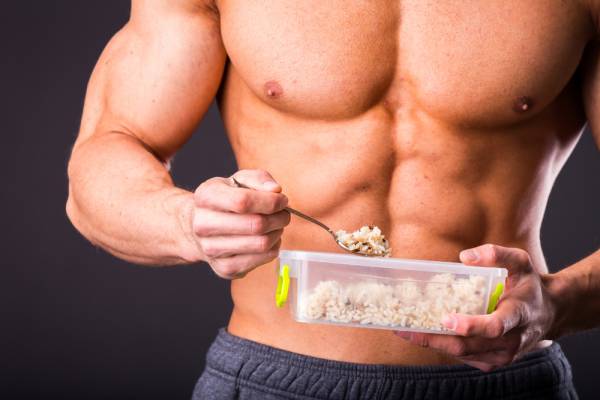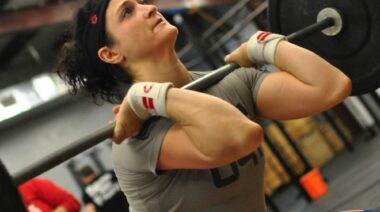It seems like lately everyone I run into is a fitness competitor, powerlifter, or “soon-to-be” bodybuilder. With strength and physique sports trending, it’s impossible to avoid the correlating trend in metabolic damage and post-contest rebound.
Whether you believe in metabolic damage or prefer to chalk it up to certain competitors being unable to control themselves after a restricted diet, severe weight gain and post-competition depression as a result of rapid increases in body fat are undeniable. They are also unwarranted when there’s a simple solution to avoiding it all – the reverse diet.
What’s a Reverse Diet?
Although you won’t find the term in any dictionary, reverse diet is a term used within the bodybuilding and competitive weightlifting communities (aka “bro-science”) to describe a period after a calorically restricted eating protocol during which you slowly work to increase calories back to a maintenance level. Using this strategy, and by assessing progress weekly and tracking increases in body fat in comparison to lean muscle mass, athletes can recover their metabolisms and increase calorie intake with minimal increase in body fat.3
“For the majority of individuals, maintaining an extremely low-calorie diet is not sustainable for long-term health, happiness, and function.”
The theory behind the reverse diet is that after prolonged periods of restricted caloric intake the athlete’s metabolism adapts to operate more efficiently. Meaning, the athlete is able to operate at a lower energy expenditure and burn fewer calories.2 If the proper dietary adjustments aren’t made to account for this slow down, the body will store those extra calories in the form of fat.
Why Would I Want to “Reverse” My Diet?
There are a few reasons to implement a reverse diet. The most common is to bring calories (and strength) back up to a healthy and sustainable level after a prolonged weight-loss diet. Whether you are a bodybuilder who has implemented a restricted diet to achieve low levels of body fat, a competitive athlete who cut calories in order to qualify for a weight class, or someone who has simply been on an extended weight-loss plan for aesthetic benefit, a reverse diet can – and, in my opinion, should – be implemented in order to slowly increase food intake to a maintenance level. For the majority of individuals, maintaining an extremely low-calorie diet is not sustainable for long-term health, happiness, and function.

A reverse diet may also be implemented to accelerate fat loss and avoid a fat-loss plateau when dieting. Although counterintuitive, this tactic can recuperate essential metabolic hormones such as T3, testosterone, and leptin, which become down regulated during extended dieting.1 By making small and calculated increases to calories, the metabolism is often able to adapt to the increase with a corresponding uptick in metabolic output and thermogenesis. The incremental additions in calories enable the individual’s metabolism to burn more energy as a result of increased energy input.4
“By making small and calculated increases to calories, the metabolism is often able to adapt to the increase with a corresponding uptick in metabolic output and thermogenesis.”
Finally, a reverse diet may be implemented in an attempt to increase an individual’s metabolic capacity and stretch the ability to intake calories while holding at a maintenance weight. Research is limited on the ability to increase the body’s metabolic capacity when an individual is already consuming energy at a level to maintain bodyweight, but if effective, the benefits would be similar to a “bulk” (when an individual consumes more calories in order to increase strength and muscle mass). Except that the moderate calorie increases and regular assessments would help the athlete to avoid the unwanted body fat gain that often accompanies a bulk.
Benefits of Reverse Dieting
The most obvious benefit is the ability to avoid the dreaded post-diet rebound. You know, the one that happens after you reach your diet goal and then stuff your face for weeks until even your socks are tight. By increasing calories incrementally, a reverse diet allows your metabolism to reignite and catch up to the surplus calories. If too many calories are introduced too soon, the body will, in essence, attempt to store these calories for the next time you expose it to an extreme calorie deficit. This can lead to rapid weight gain and potential long-term metabolic damage.3
The psychological benefit of reverse dieting is vast. By controlling yourself and having a structured plan post-diet, it is less likely that you will experience the rapid weight gain and discomfort that often lead to depression and body dissatisfaction. The goal of the reverse diet is to increase calories with minimal weight gain. If done properly, it allows an easier transition from contest or competition shape to offseason maintenance eating.

The How To
I know what you’re thinking: if it’s so easy, why doesn’t everybody do it? Well, in theory, it’s easy. In practice, it’s hard. In my experience, the reverse diet is more difficult than the diet you’re coming off. It’s extremely challenging to implement the self-control and discipline required to properly apply the reverse diet. When it comes to this approach, slow and steady is best and it’s better to start too low than too high.
“The goal of the reverse diet is to increase calories with minimal weight gain. If done properly, it allows an easier transition from contest or competition shape to offseason maintenance eating.”
Although every individual’s metabolism and needs will differ, the general formula for preparing for a successful reverse diet is fairly simple. It’s just a test of willpower. That said, here are some strategies to help you stay on track:
- Have a Plan: You must have a plan ready to be implemented immediately post competition or diet. This means your celebration meals are planned and food is already prepped. This is an extremely sensitive window for the body to gain weight and it’s not worth the extra Big Mac, I promise.
- Week One: If you implemented a peak week, then return to the calories and macronutrient breakdown you followed the week before the beginning of your peak week (for general weight loss dieters, skip this step).
- Next: Introduce a small calorie increase in the form of carbohydrates. The lower your calorie deficit, the more moderate your calorie increase needs to be. Likewise, women will normally need to be more cautious than men in their percentage increases. I recommend an increase of 3% calories for women and 5% increase for men as a starting point.
- Assess Weight and Body Fat Weekly: Take assessments approximately seven days after your last calorie increase. Remain consistent with the timing (i.e. first thing in the morning before any fluid). If you don’t have access to body fat assessments, then use a combination of the mirror, pictures, and a scale as gauges. If you restricted water at the end of your diet, take this into account and use the weight and pictures taken the week before your peak week to compare.
- Make Weekly Increases as Body Fat Stays Constant: If body fat increases by more than 1% each week, consider holding things constant for a week before making another increase. If after two weeks the scale or body fat percentage continues to rise, you may want to pull back and find your maintenance caloric intake.
- Make Small Increases in Fat Grams: Do this as needed to keep your dietary fats at a healthy percentage and remain at the allotted percentage in your daily diet. If you were eating an extremely low-fat diet, you may consider implementing more fats in replace of carbohydrates.
“If after two weeks the scale or body fat percentage continues to rise, you may want to pull back and find your maintenance caloric intake.”

If, after two or three weeks of moderate increases, your bodyweight and body fat are not increasing, you may feel comfortable enough to increase the percentage calorie adjustments each week to accelerate more quickly. Upon reaching your maintenance calorie intake you may make the decision to continue increasing your calories slowly in order to enter into a mass-gaining phase.
My Advice
Although the process of reverse dieting is a test of patience and self-control, I believe the physical and mental benefits are worthy of the investment. I recommend hiring a knowledgeable coach to help you through the process and to make the proper adjustments, as well as to hold you accountable.
If You Like This, You Might Also Enjoy:
- 5 Bodybuilding Practices That Can Help Anyone Build Muscle
- How to Recycle and Progress Your Nutrition (Just Like Your Lifting)
- How to Cut Weight the Right Way
- What’s New on Breaking Muscle UK Today
References:
1. Chan J., HeistK., DePaoli, A., et al. “The role of falling leptin levels in the neuroendocrine and metabolic adaptation to short-term starvation in healthy men.” JCI. 2003;111(9):1409–1421. doi:10.1172/JCI17490.
2. Heilbronn LK, de Jonge L,, Frisard MI., et al. “Effect of 6-Month Calorie Restriction on Biomarkers of Longevity, Metabolic Adaptation, and Oxidative Stress in Overweight Individuals: A Randomized Controlled Trial.” JAMA. 2006;295(13):1539-1548. doi:10.1001/jama.295.13.1539.
3. Norton L., and Lee, S. Reverse Dieting. 2014
4. Trexler E., Smith-Ryan A., & Norton L. “Metabolic adaptation to weight loss: implications for the athlete.” Journal of the International Society of Sports Nutrition. 2014; 11(7).
Photos courtesy of Shutterstock.






